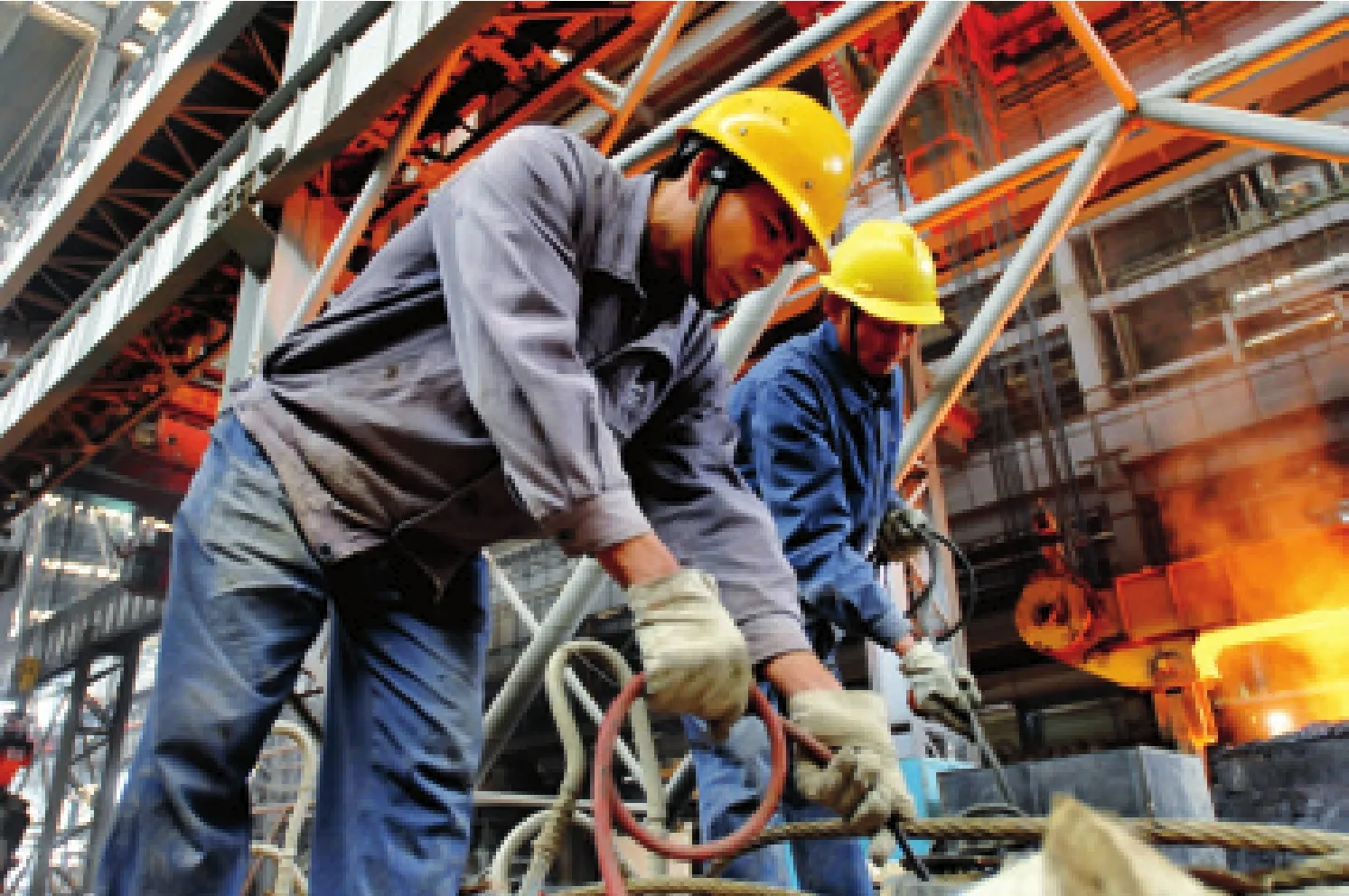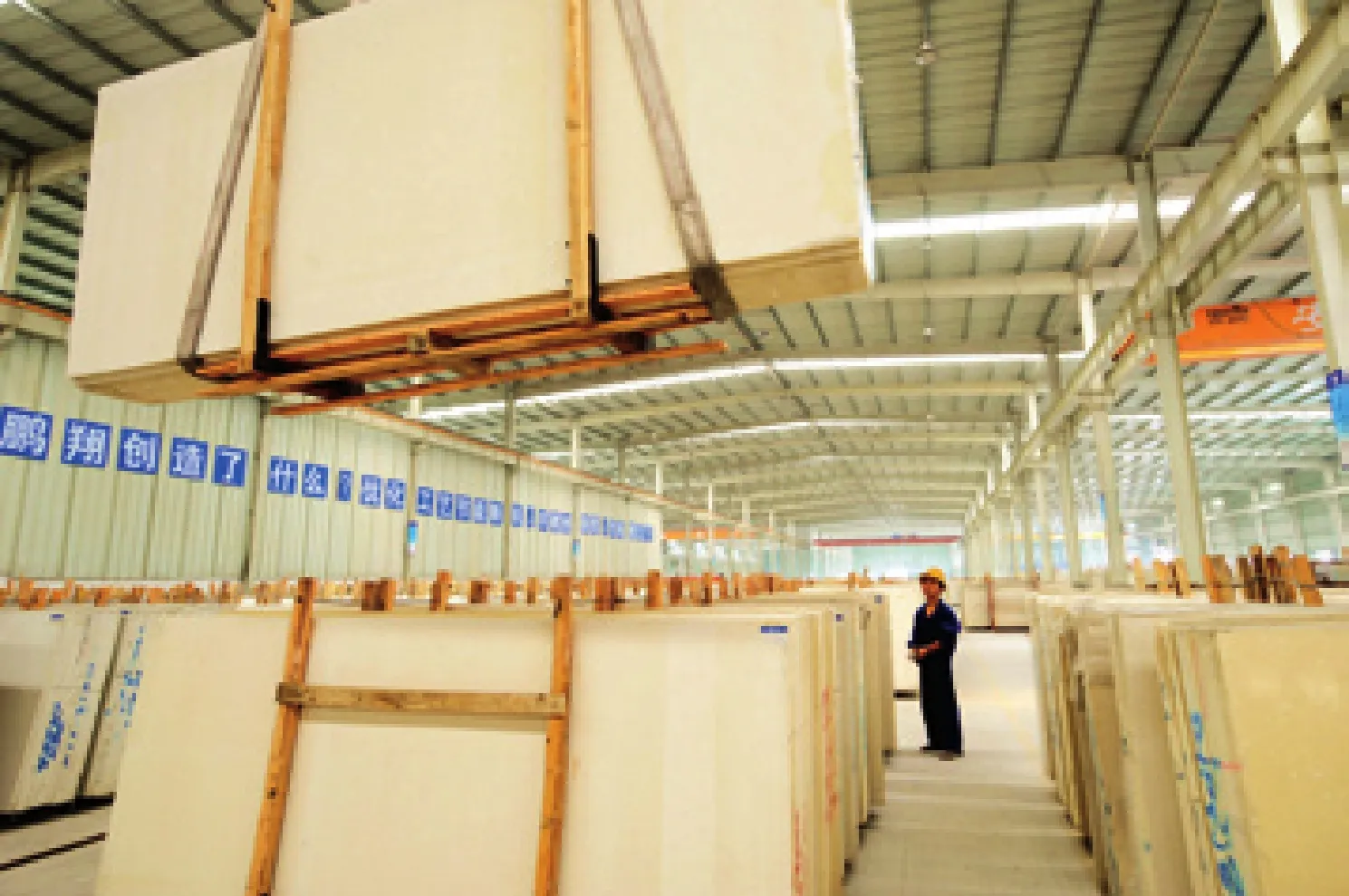Cutting Back on Profligate Industries
2011-10-14ByLANXINZHEN
By LAN XINZHEN
Cutting Back on Profligate Industries
By LAN XINZHEN
Energy-consuming sectors pose a daunting challenge as China tries to rebalance its economy
As China gears up for more sustainable growth, economic rebalancing has become a national priority. The country’s major stumbling block for the time being is taming energy-guzzling industries hampering that growth. Electric power,iron and steel, building materials, nonferrous metals, chemical and petrochemical industries staged a significant rebound in the first half of this year, complicating the government’s efforts to steer the economy toward a greener future.
China’s power consumption totaled 2.25 trillion kwh in the fi rst half of this year, representing an increase of 12.2 percent from a year ago, according to data from the National Energy Administration (NEA). Of this total,5.3 percentage points came from China’s main energy-depleting industries: electricity,steel, building materials, nonferrous metals,chemicals and petrochemicals. In addition,the six sectors saw their combined power consumption jump by nearly 11 percent in the fi rst six months year on year.
Investment in those sectors has been heavy, making it more dif fi cult for China to restructure its economy, said Xu Yongsheng,Director of the Electricity Department of the NEA.
“China still faces an over-dependence on energy and resource consumption as an impetus to economic growth, and the country still has a long way to go to reshape its growth pattern,” said Xu.
China’s arduous task of achieving the target for emission reductions is complicated by the momentum these energy-guzzlers seem to be maintaining. Earlier this year, the Chinese Government set the target for 2011: reducing energy consumption per unit of the industrial added value by 4 percent, decreasing carbon dioxide emission per unit of the industrial added value by at least 4 percent, cutting water consumption per unit of the industrial added value by 7 percent, and increasing the comprehensive utilization rate of industrial solid wastes by 2.2 percentage points.
The cause
“China has spared no effort to advance industrial restructuring, but the measures have yet to yield satisfactory results,” said Han Xiaoping,CIO of China5e.com, a major energy information website.
“While the heavy industry continues expanding, hi-tech businesses are not growing as fast as expected,” said Han. “A major reason is that many local governments have borrowed large amounts of money to boost energy-intensive industries.”
In the wake of the financial crisis in 2008, China stepped up a 4-trillion-yuan($615.4 billion) stimulus package to revitalize its economy. Some local governments submitted a batch of energy-depleting projects that were under the cloak of key development projects to the Central Government for approval and received funding as part of the stimulus package.Meanwhile, many state-owned enterprises have recklessly expanded their industrial capacities. Furthermore, since this is the fi rst year of China’s 12th Five-Year Plan (2011-15), investments are creeping up across the country. All these factors have pushed up investments in energy-consuming industries.
Han added that local governments are pushing into energy-intensive sectors, looking to expand their GDP growth rates and tax revenues. They offered favorable policies to lure investors, accelerating development of energy-depleting capacities.
“That has consumed huge amounts of resources and energies, and also exacerbated environment pollution,” said Han. “In addition, low-price products exported by those industries have prompted trade partners to take anti-dumping measures against China.”
The only solution is to step up a stringent clampdown on those industries and remove the stumbling block on the path of sustainable growth, he said.
In a recent report, the Development Research Center under the State Council attributed the vicious cycle faced by the Chinese economy to a string of factors.
First, China remains a developing country with its population accounting for one fifth of the world’s total. The accelerated process of urbanization and industrialization and the Chinese people’s growing desire to improve their living standards have created a great demand for more energy resources and raw materials. Although China is already widely recognized as the “factory of the world,” it lacks technological prowess to push forward effective economic rebalancing. Given the huge size of its economy, it would take time for the country to optimize its growth model.
Second, local governments have protected energy-consuming industries because of their pro fi tability. And at the central level,the power of industrial supervision, projectapproval, land approval, environment review and financing is in the hands of different departments, making it difficult, if not impossible, to control.

(Left) GREENER FUTURE: Workers of Xinyu Iron and Steel Co. Ltd. in Jiangxi Province work during holidays to produce high-quality steelf
Countermeasures
Despite the severe difficulties, policymakers have never relaxed their efforts to propel the green economy. On July 11,the Ministry of Industry and Information Technology (MIIT) released a list of industrial enterprises that must eliminate outdated and polluting capacities. The list included 2,255 companies in 18 sectors including iron and steel making, cement, copper smelting,papermaking, and dyeing and printing.
“This move is a needed boon to curb the energy-intensive industries and pave way for the country to meet the target of energy conservation and emission reduction,” said Pan Yuhong, a researcher with the Shenzhenbased think-tank CIConsulting. “It is also important for the country’s industrial upgrade and economic restructuring.”
Zhu Hongren, chief engineer of the MIIT, said the market should have played an important role in conserving energies and clearing pollutions.
“However, the market mechanism is not effective because enterprises don’t have to pay full price for consumed resources and energies, as well as the cost of the environment, land and labors,” he said. “China has yet to put in place a complete market-based pricing scheme of resource products like electricity and fuel.”
“Many highly polluting enterprises shunned the responsibility of energy conservation and emission reductions,” he said.“With less costs, many of them have lowered product prices, leading to a sales boom.”
As a result, it is necessary for the government to continue eliminating outdated capacities and allow the market to play a bigger role in resource allocation, said Zhu.
He added that the task was dif fi cult because it involved a series of issues, such as asset losses, debt repayment, employment and local economic development. “Besides this, it would have huge impact on fi scal revenues of local governments.”
In a bid to press ahead with the green economy, the MIIT and the Ministry of Environmental Protection have raised the entry threshold and project construction environment requirements for some energy-guzzling and polluting industries. Meanwhile, the National Development and Reform Commission and the MIIT have stopped approving new projects for those sectors.
The government is also taking vigorous efforts to improve the market mechanism to conserve energy. For example, some central and eastern provinces have imposed higher electricity tariffs on companies that use too many resources. The government has also set up a bonus fund to encourage enterprises to phase out polluting capacities. The highperforming companies can receive bonuses while those bad performers will have to suffer punishments.
Zhu said this year the MIIT will assign concrete tasks of eliminating outdated capacities to enterprises and release the list of designated enterprises for public supervision.The ministry will also take follow-up legal and economic measures to ensure implementation of the program, he added.

SUSTAINABLE ECONOMY: Pictured is a workshop of Quanzhou Pengxiang Artificial Stone Co. Ltd. in Fujian Province for packaging stone plates made from reused stone powder and broken rocks
